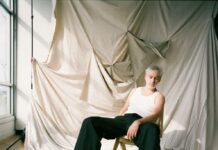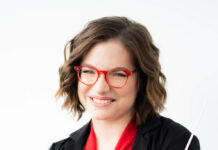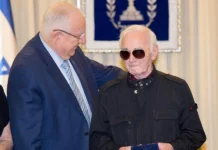
Composer Ari Sussman’s “I mean you no harm,” a 43-minute mixed chamber ensemble piece, begins with a long pull of strings, followed by the clang of a bell, then more humming strings and a tentative, almost discordant piano. A quiet collection of voices emerge from the backdrop and crescendo.
The piece — Sussman’s dissertation when he received his doctorate in composition at the University of Michigan in 2021 — is hardly the melodic euphony of sounds that chamber ensemble music has been associated with, but, according to Sussman, it’s not supposed to.
Composed during COVID, “the general gist of the piece was to alleviate stress and anxiety by means of different meditative and healing practices, so I used some from both in the medical field and some in the spiritual field,” Sussman said.
In addition to using binaural sounds (played in both ears) at slightly different hertz to create different pitches — a strategy used to decrease heart rates — Sussman employed spiritual techniques from Buddhist meditation, but also from Kabbalah, using 10-note chords to mirror the 10 Sefirot, or divine emanations, described in Jewish mysticism.
Sussman, 29 and a Fairmount resident, has made room for Judaism in his compositions throughout his career: He’s a professor of composition and music theory at Temple and West Chester universities; he won the University of Michigan Brehn Prize in Choral Composition and the Leonard Bernstein Fellowship in composition from the Tanglewood Music Center, among other recognitions for his compositions throughout his formal music education.
“The first music I was ever writing were campy liturgical songs … doing settings to Hallelujah/Psalm 150, to just different texts throughout Shabbos liturgy or daily liturgy,” he said.
Sussman graduated from the Debbie Friedman and Rick Recht-esque guitar and keyboard arrangements to Jewish liturgical choral music and then contemporary takes on classical Jewish music.
He makes his goals as an artist clear. Sussman tells his students, “Not as much what can you copy in our field, but what can you add to our field? What is something unique about you, your life, your circumstances, your background, that no one else on the face of the earth can say on your behalf?”
Born and raised in Elkins Park, Sussman grew up “in a house full of Yiddishkeit,” the factor in his background that would define his musical voice. Resembling the path of many Jewish kids in the area, he attended Perelman Jewish Day School-Foreman Center, the Robert Saligman Middle School (which later merged with Jack M. Barrack Hebrew Academy) before attending Barrack for high school. In the summers, he was a camper, and later counselor, at Camp Ramah in the Poconos. A longtime member of Congregation Adath Jeshurun, Sussman was the head gabbai in high school, responsible for assigning Torah readings to congregants.
But what was most influential about Sussman’s Jewish upbringing was the synagogue’s “strong music tradition.” Sussman, who took classical piano lessons for most of his childhood, looked up to Adath Jeshurun’s Cantor Charles Davidson.
“For a lot of synagogues, regardless of where you live in downtown Philly or Wisconsin or Vegas, I just assumed that any city would have a cantor of the caliber of Charles Davidson, someone who’s written such incredible music that has received thousands of performances worldwide,” Sussman said. “I just thought it was a foregone conclusion.”
Though always a proud Jew, it was Sussman’s grappling with God that eventually led to how Judaism features in his music.
Before Sussman found new ways to connect with Judaism during his time at Boston’s New England Conservatory of Music, where he pursued his bachelor’s and master’s degrees, he became frustrated with the literal and physical descriptions people would give God. Combined with his identity as a gay man, Sussman took issue with a diety’s personification as a man or a king on a throne.
When Sussman began studying Kabbalah and Sefirot, his perceptions of God were allowed and encouraged to become untethered from a physical form, something he had struggled with since high school.
“It was a good-things-come-to-those-who-wait situation,” he said. “That’s why Kabbalistic teaching has meant a lot to me when it comes to my own struggles with my Jewish identity.”
As his relationship to Judaism changes, so does Sussman’s music. Sussman has noticed that the horizontal elements of his music have evolved: how he plays with time and tempo to create different effects. But some things stay the same. He still relies on similar chord structures and harmonics, techniques he’s favored since beginning his journey as a musician over two decades ago.
“A lot of the chords I enjoyed playing on the piano at the Barrack auditorium I still play in my office, at Temple or at West Chester,” Sussman said. “Still playing those same chords.”






